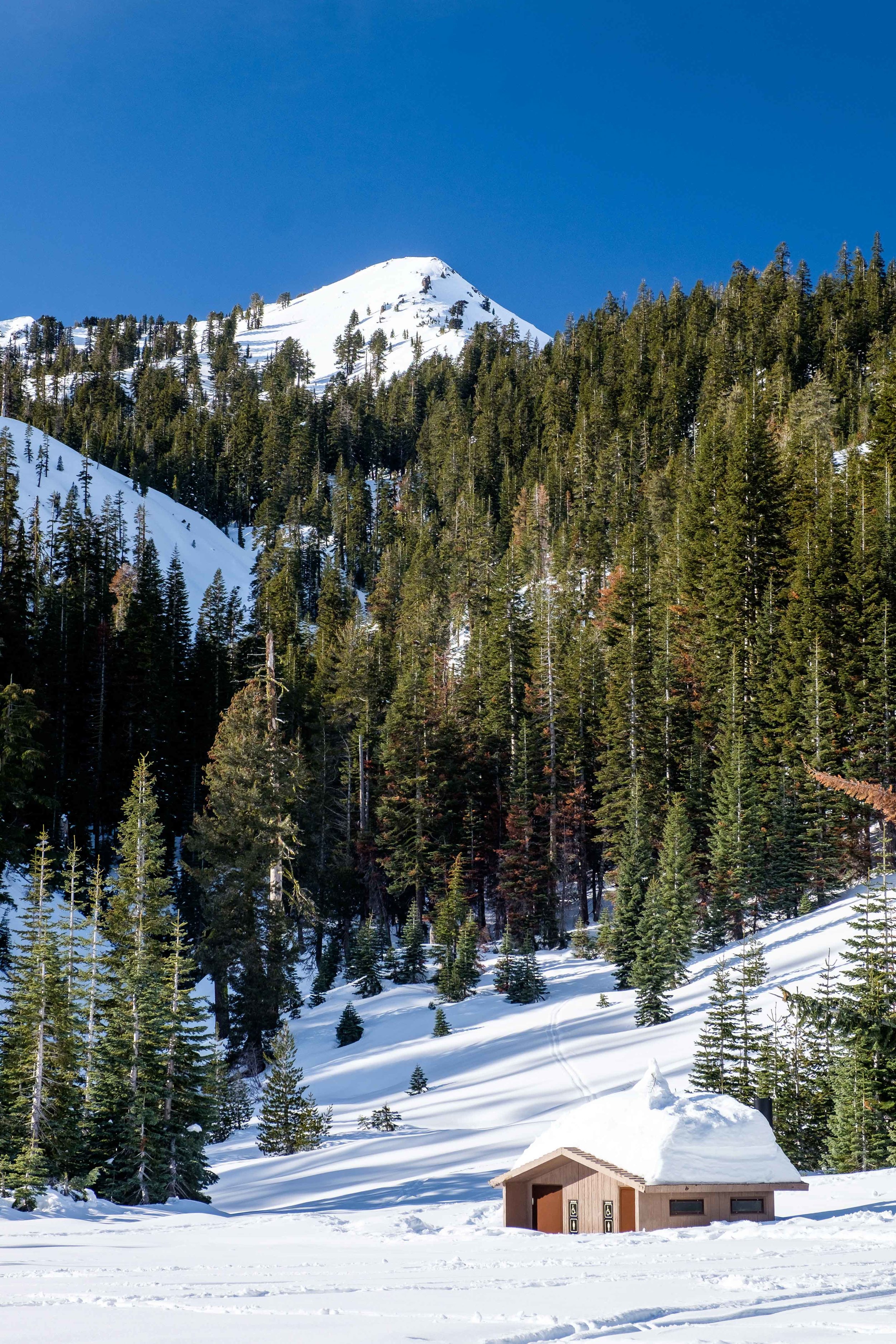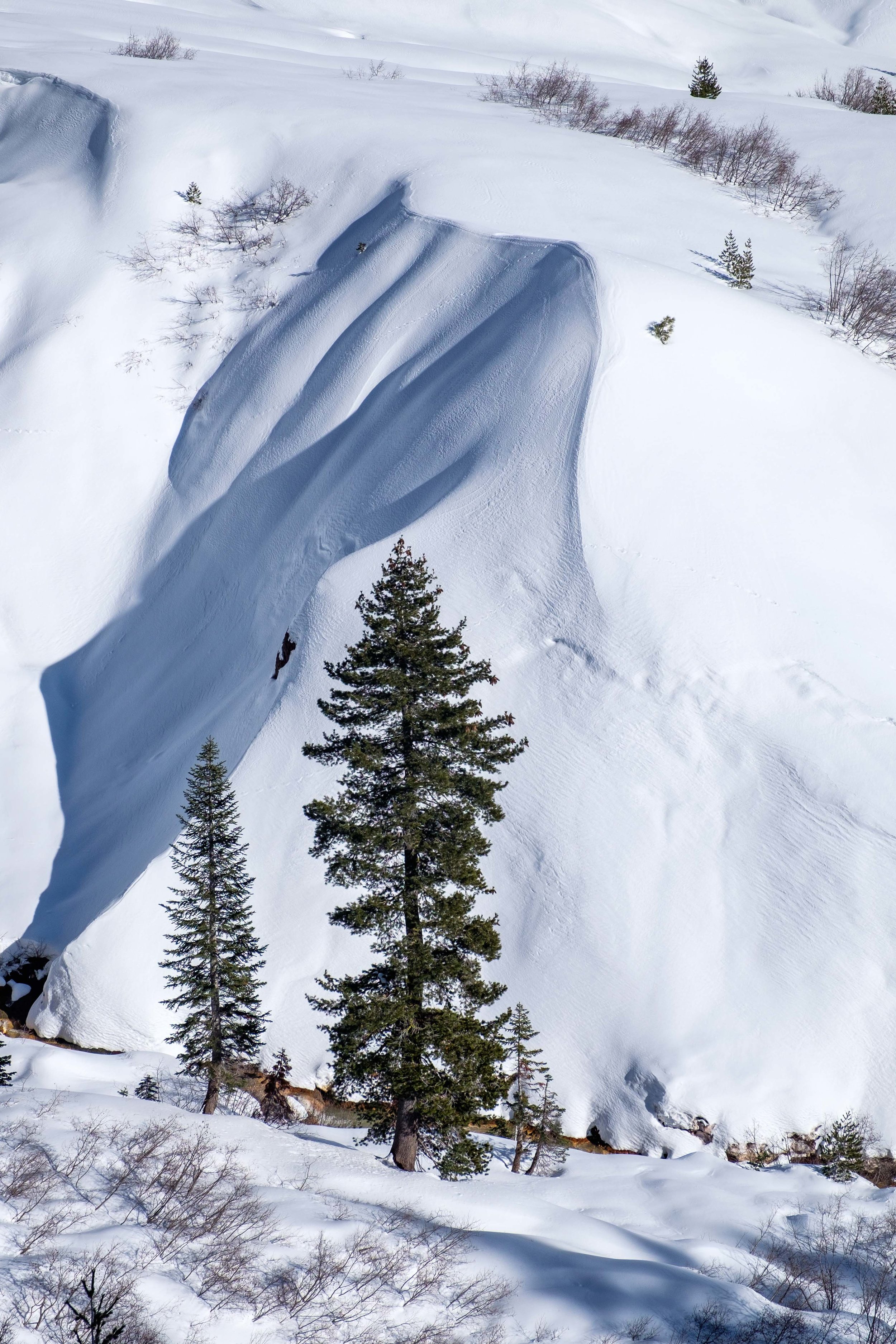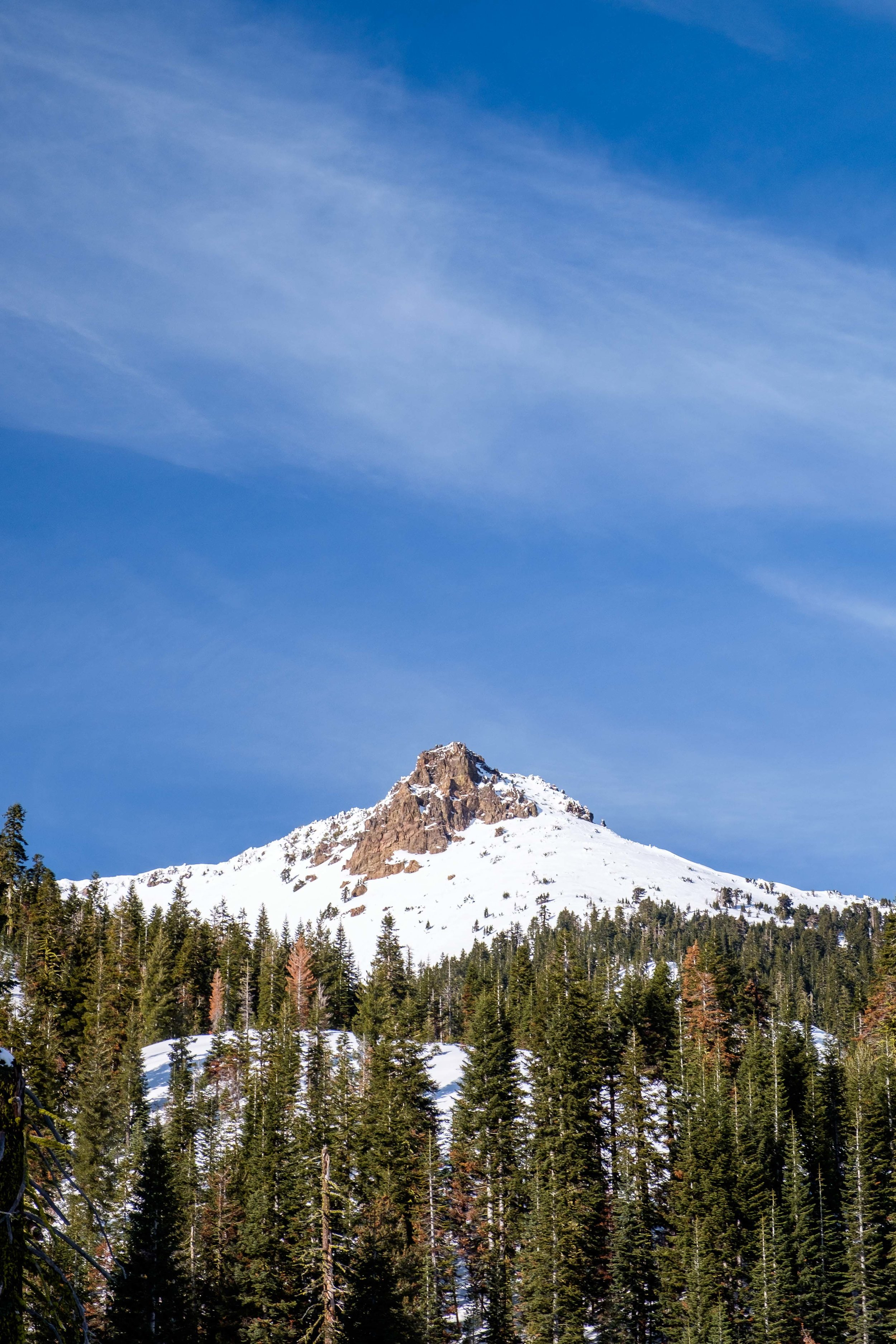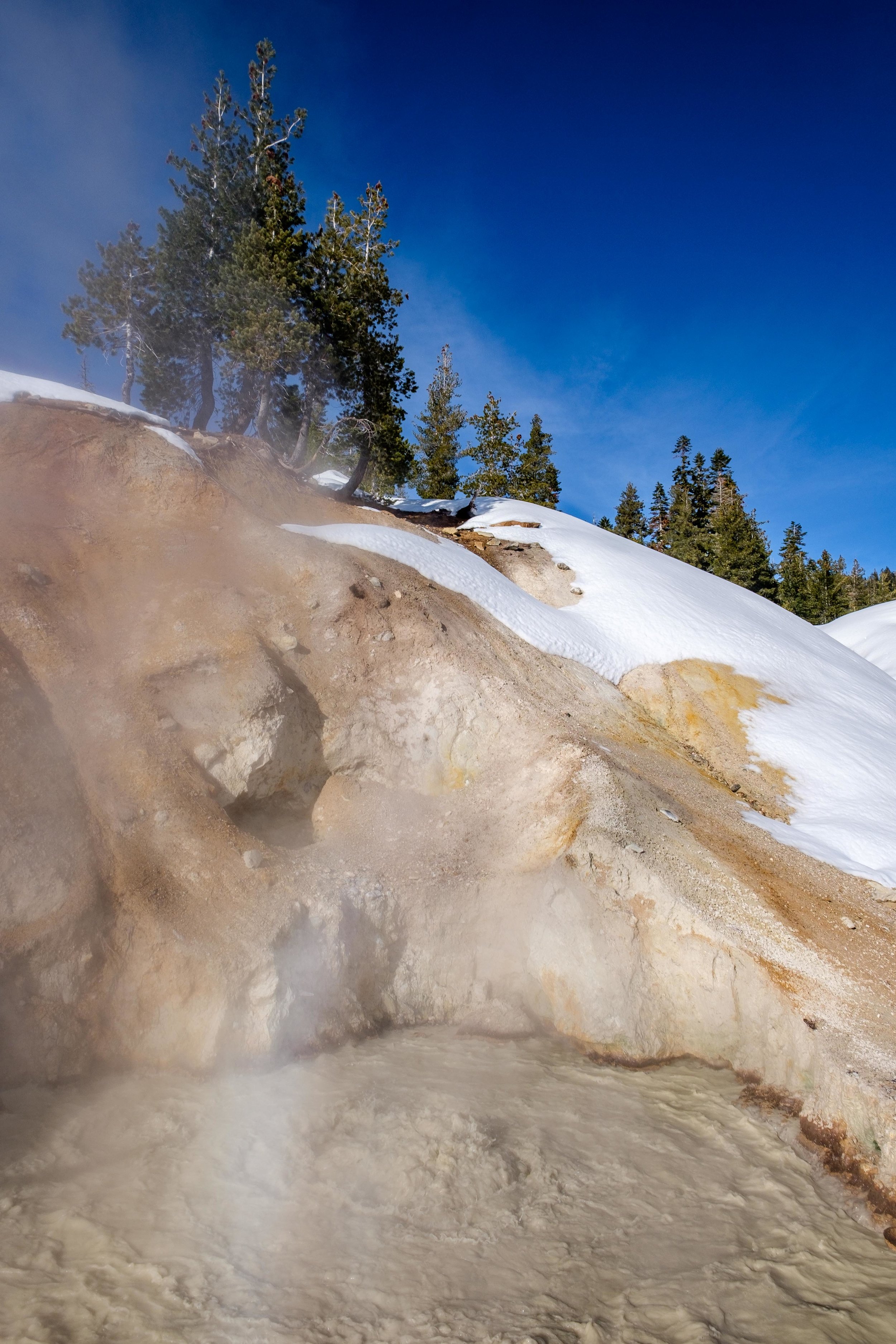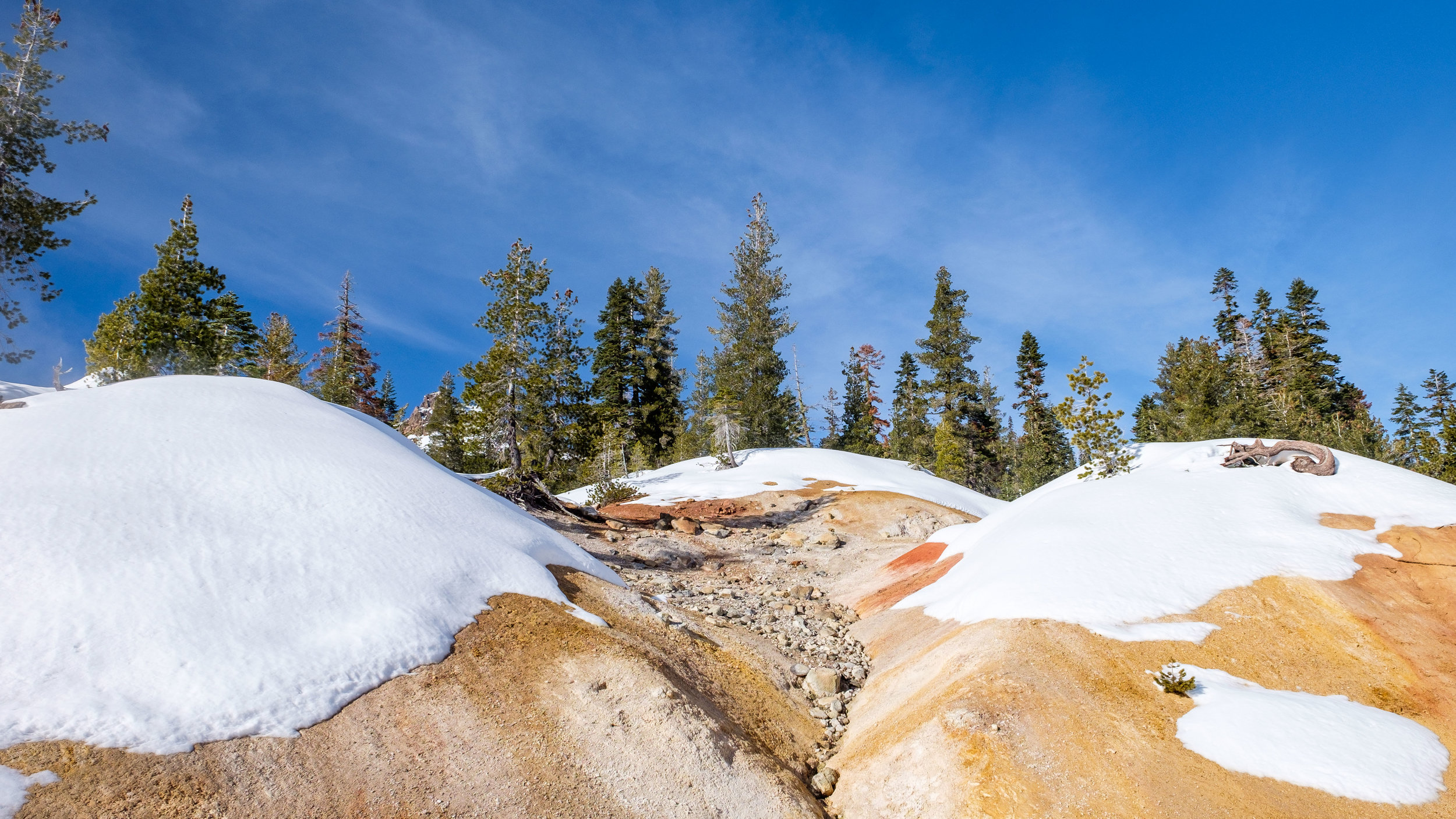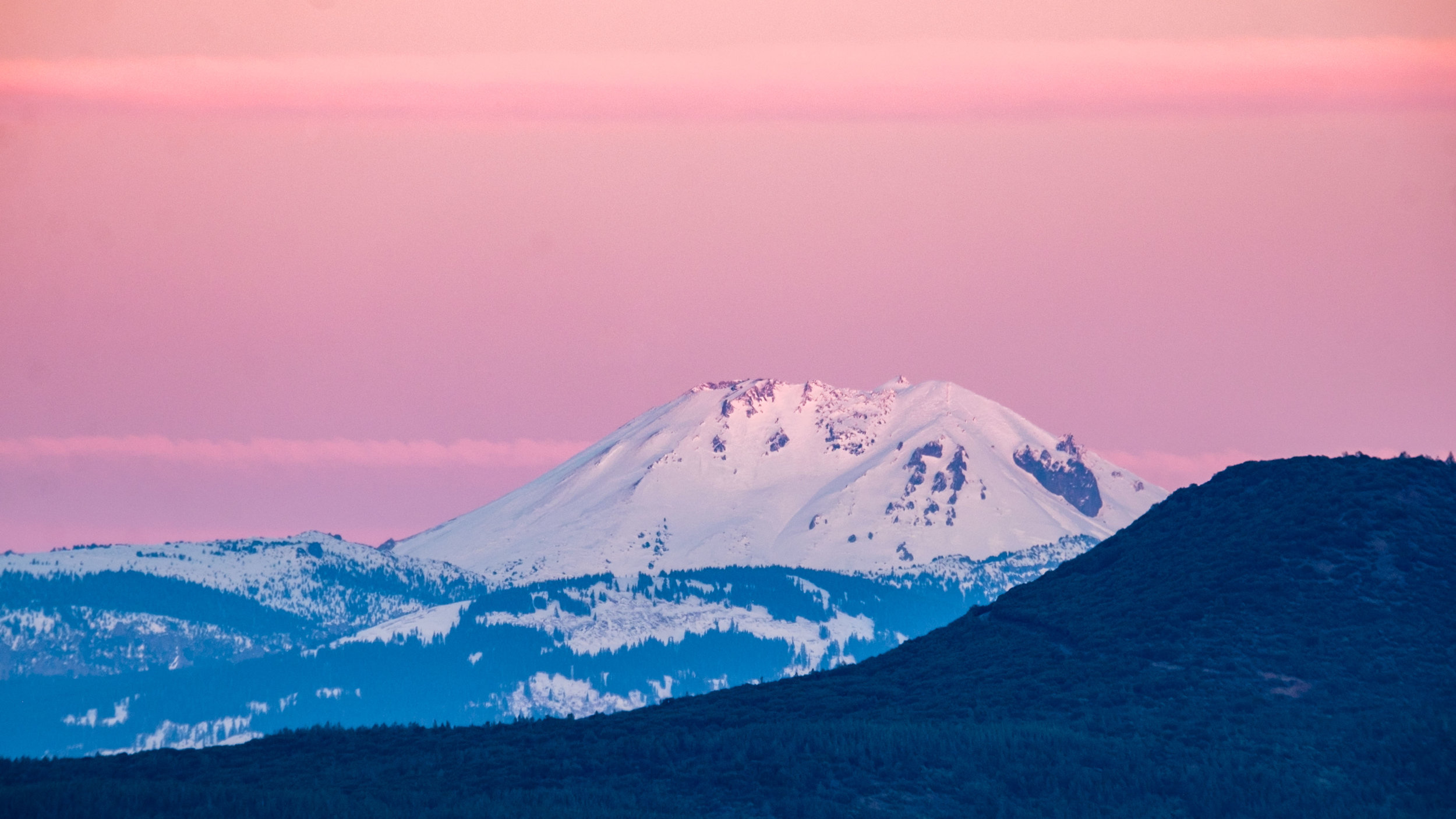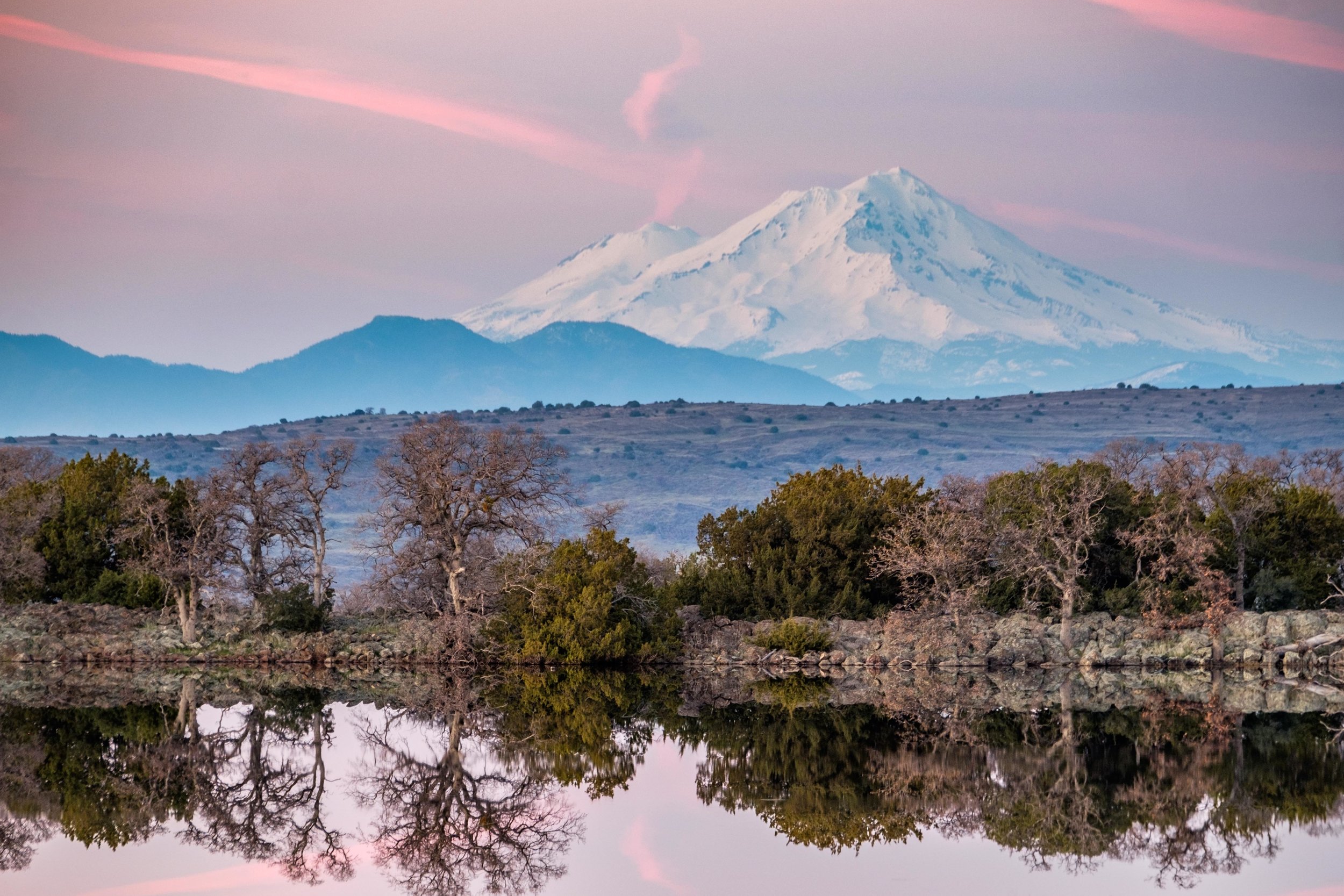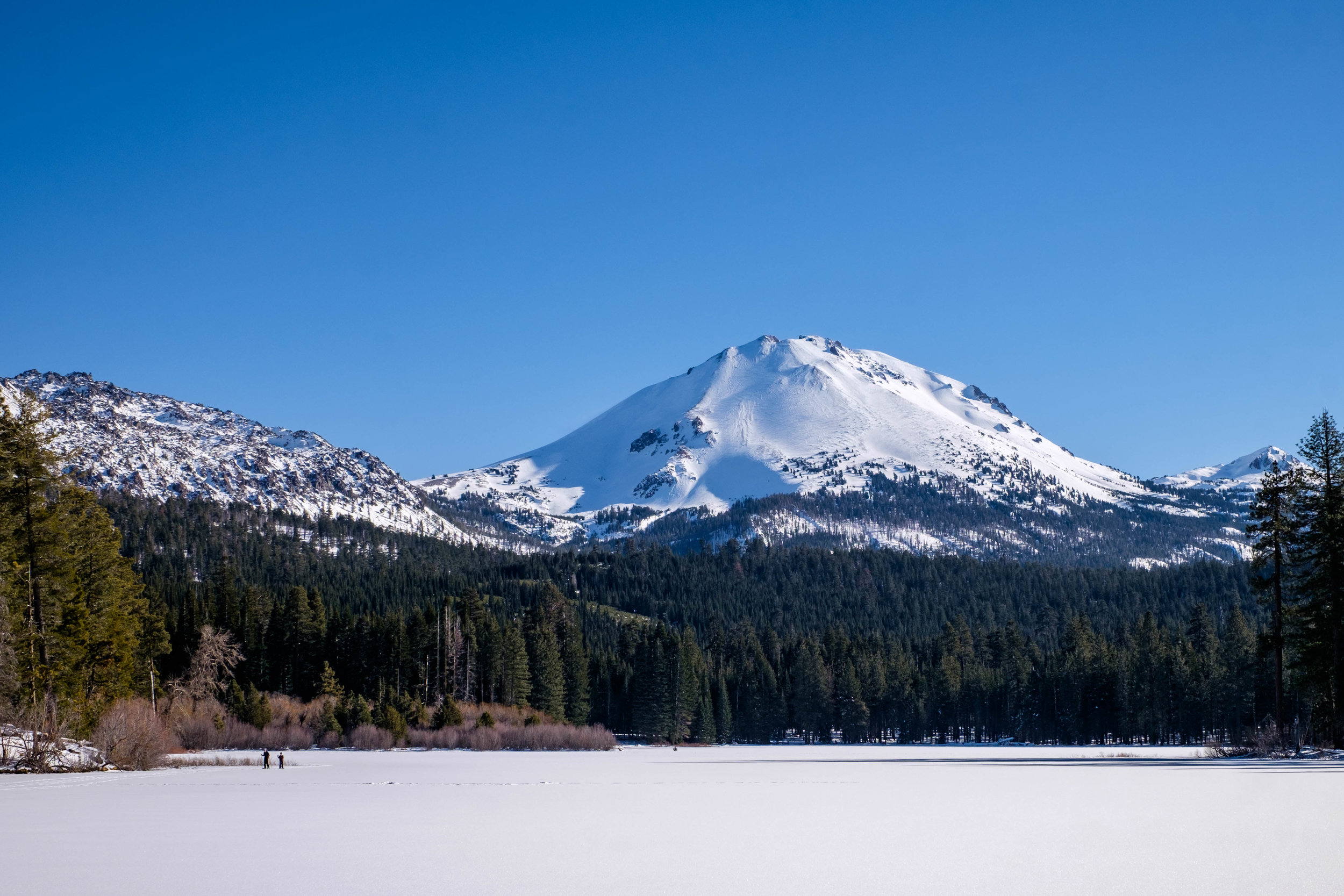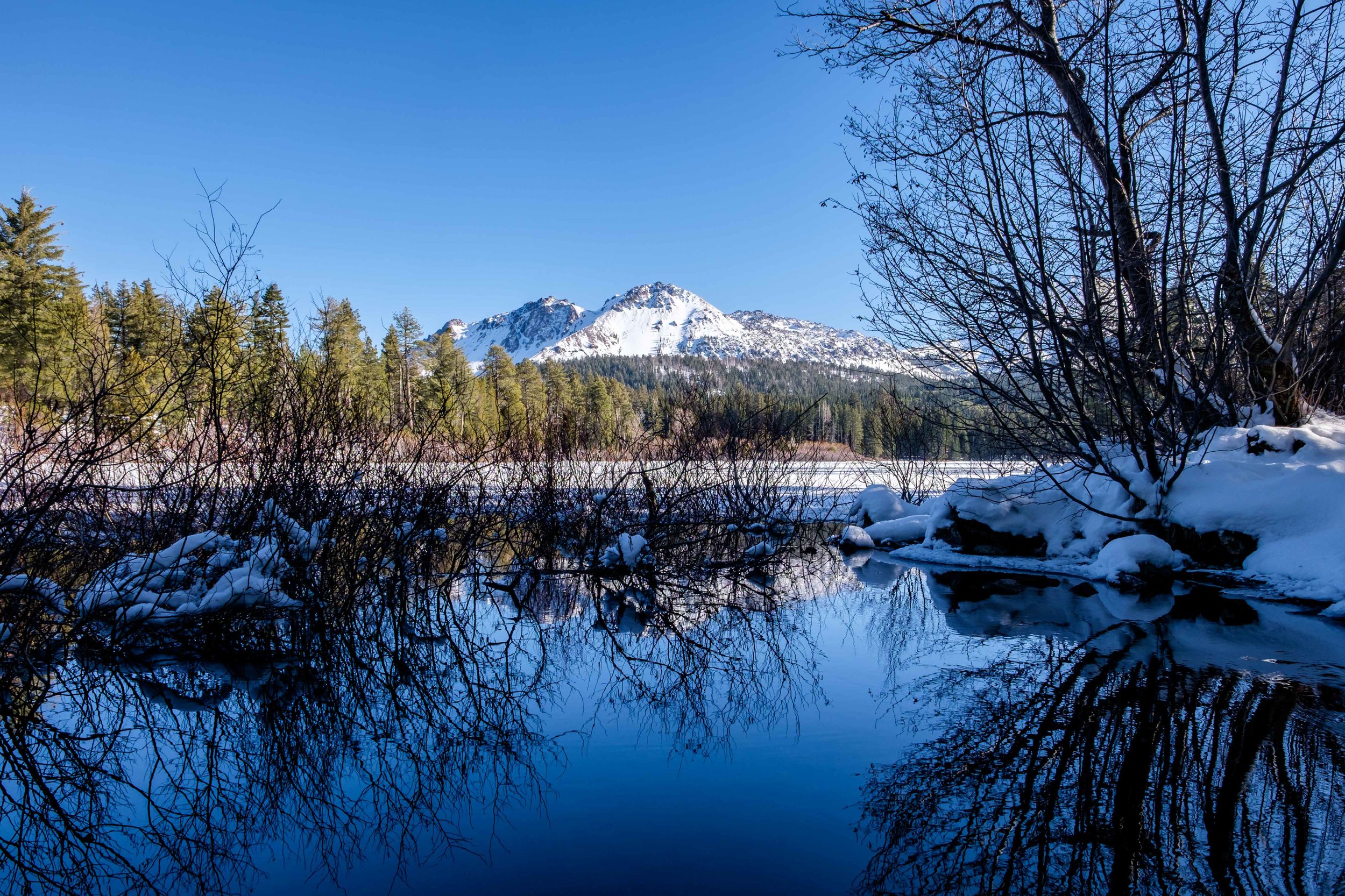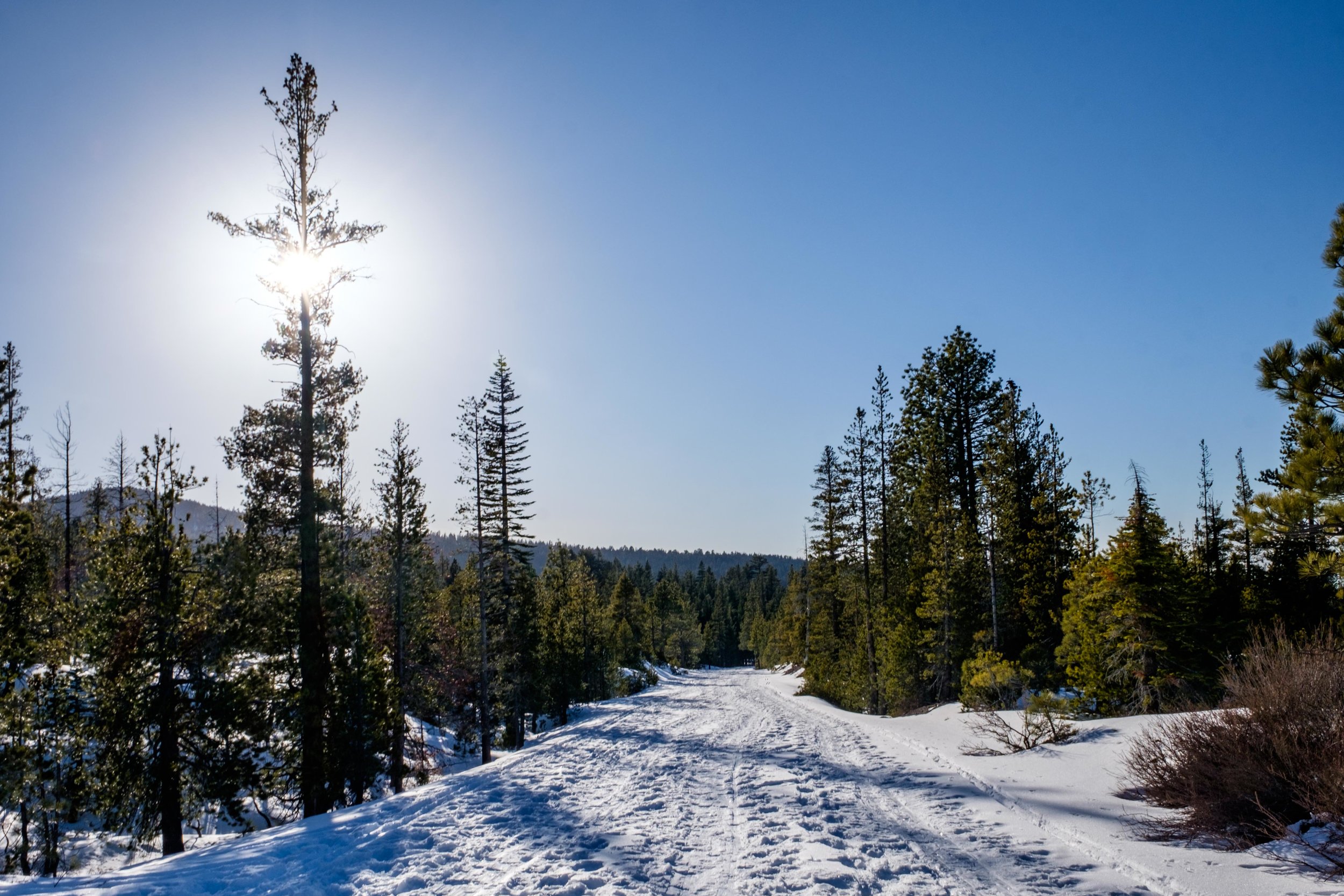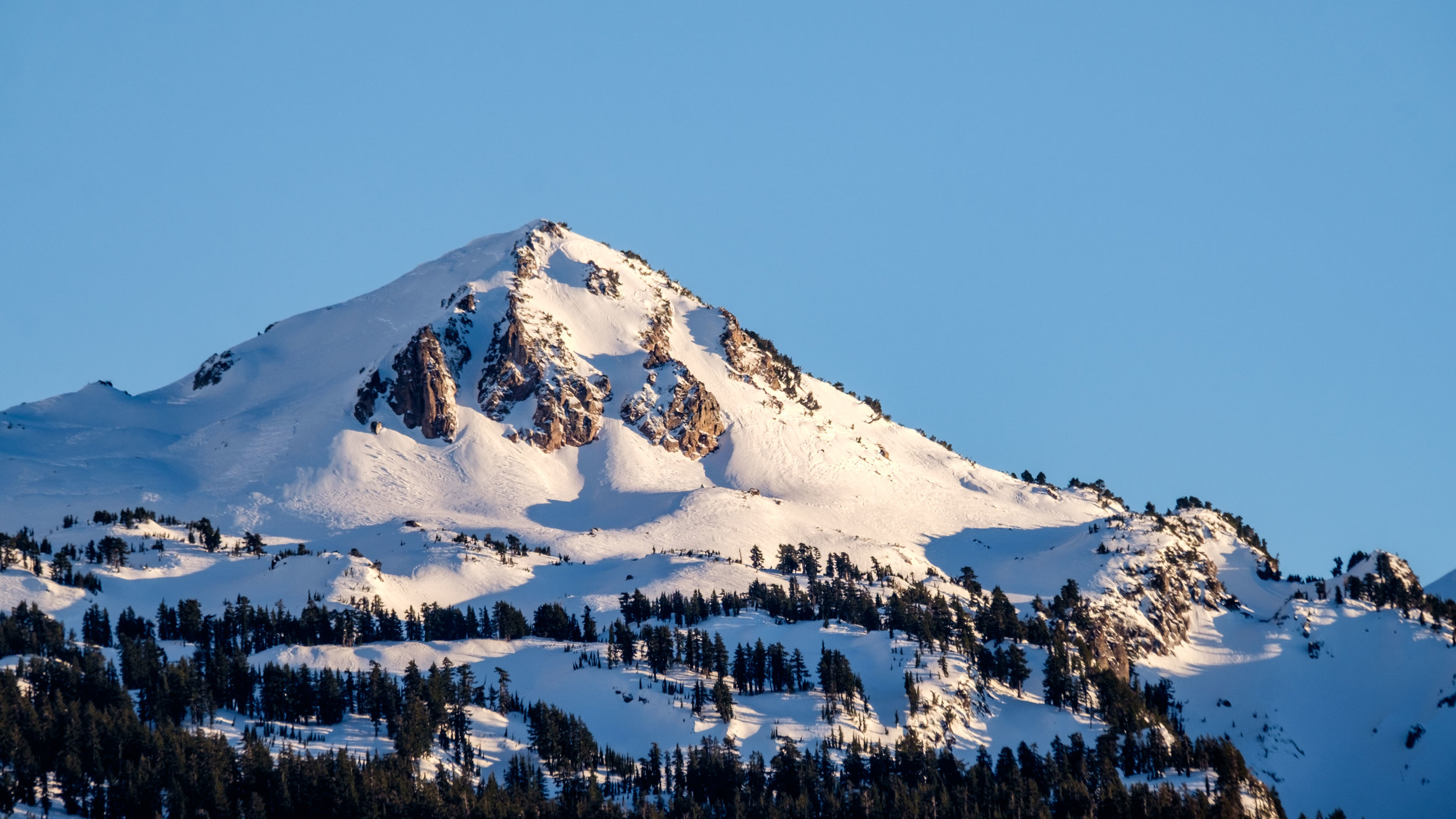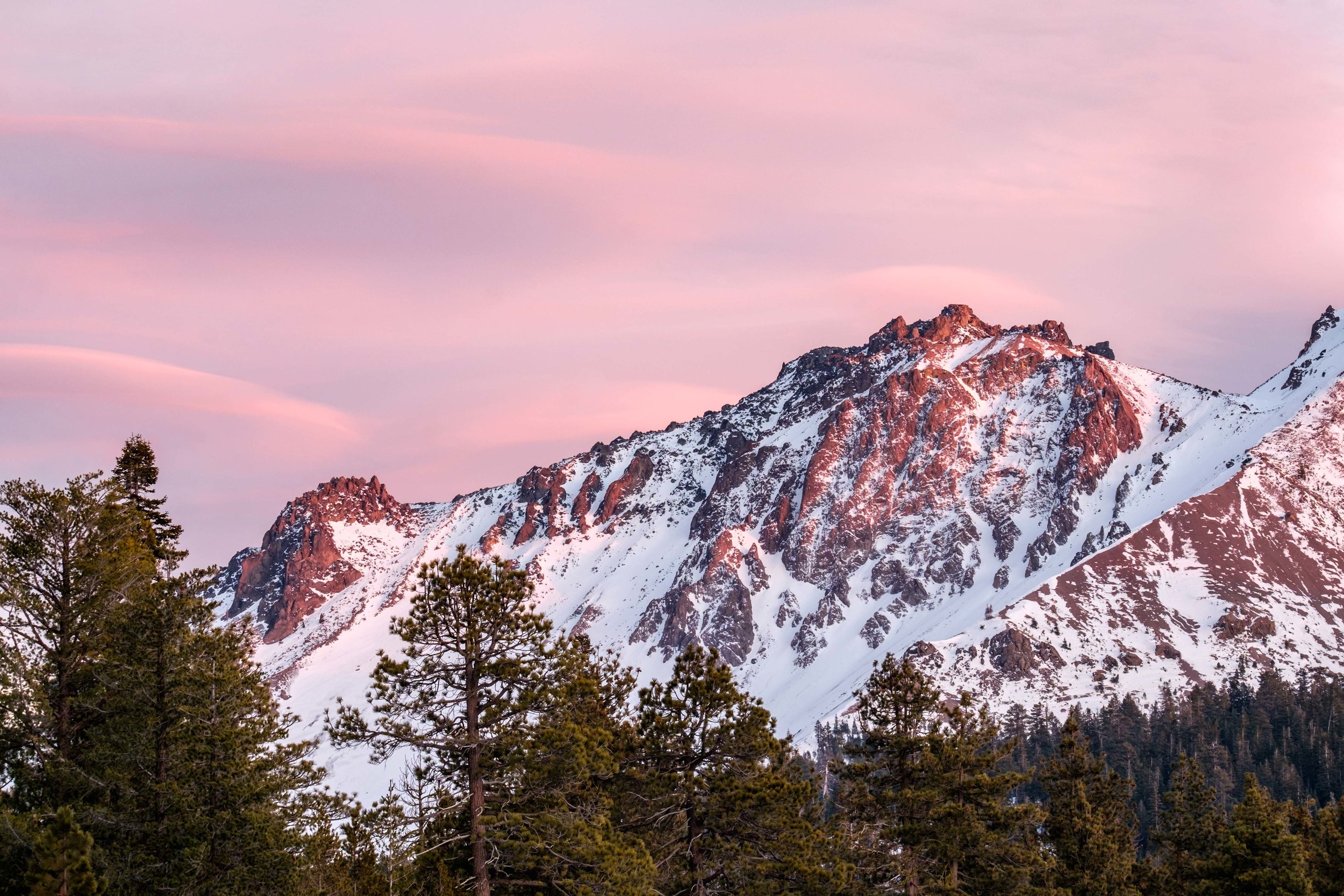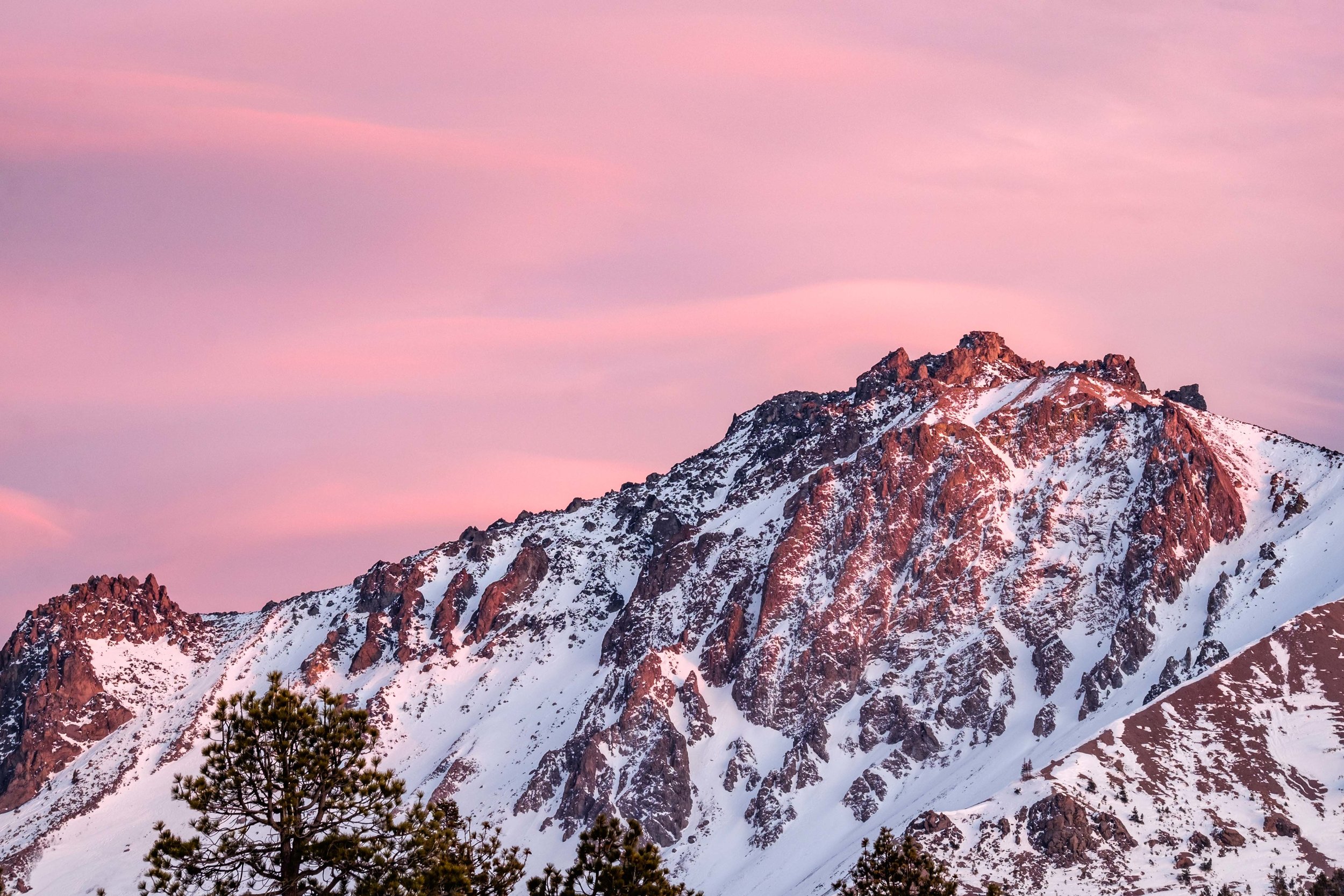Lassen Volcanic National Park, California, USA | Park 58/59
“Lassen’s Peak looks sharper from this side than any other, and views seen from among these pinnacles and rocks are some of the most picturesque imaginable. A series of photographs would be treasures indeed.”
Winter Exploration of Lassen Volcanic National Park
Lassen Peak: the centerpiece of Lassen Volcanic National Park in northern California.
While Lassen Volcanic National Park is just as serene and peaceful as other California national parks, it was established to protect and aid the research of a turbulent landscape. The birth of this park as a federally protected area really began in the summer of 1914 when three climbers ascended Lassen Peak in an attempt to uncover the reasons why the dormant volcano had recently started rumbling deep beneath its surface. As they neared the top, the volcano began to erupt, spewing ash and debris into the air forming a 12-mile long mud flow that flooded across the region. The climbers narrowly escaped and survived the event – an event that would become one of intense study for many years to come. In 1915, the peak blew its top. The catastrophic eruption forced rock, trees, and debris miles down into valleys, devastating the surrounding areas and changing its landscape forever. Then in 1917, the volcano fell dormant.
Hiking through backcountry is wonderful way to explore a snow-covered Lassen National Park!
Today, the active but sleeping volcano is the high point of a lively wilderness environment. Across 160,000 acres, elevations range from 5,300 to over 10,000 feet creating a diverse landscape decorated by jagged mountain peaks, alpine lakes, forests, meadows, streams, waterfalls, and of course, volcanoes. There are hot springs, geysers, fumaroles, mud pots, steam vents, and other geothermal features in the area as well from where bubbling activity still appears, reminding us of the region's stormy past.
With all of that said, it is not surprising that Lassen Volcanic National Park is known for its extreme weather. During heavy snow years, the main park road along the Lassen Volcanic National Park Scenic Highway (the main park road) may not open until May, and even sometimes not until mid-July putting visitors at the mercy of Mother Nature during any time of the year.
We visited during December when much of the park was closed due to heavy snowfall and icy conditions on the roadways and on the trails. In a way, it was fortuitous for it allowed us to dive into the scenery in a different way and share here a side of the park that many visitors never get a chance to see... So with that, we want to share with you a few ways to experience this park during the winter – when it is virtually free of crowds and in a raw state.
Hike through the snow to geothermal features – When winter falls, the best way to explore this park is on foot. A great starting point is in the southwestern area of the park at the Kohm Yah-mah-nee Visitor Center where you can head out to explore as much of the 30-mile snowed-over park road that you wish to see. Not too far into the hike you will come to a mysterious bubbling mud pot called Sulphur Works, a geothermal feature that relentlessly breathes hot life into an otherwise still landscape. This is the most easily accessible hydrothermal site in the park, and one of the only (if not the only) one open during the winter season. You can reach it after a relatively short walk from the parking area at the visitor center. The park doesn’t rent snowshoes but you can find them in outlying towns, so plan ahead and bring your own equipment. If you are new to snowshoeing and/or want to learn more about the park, there are ranger-guided snowshoe walks where gear is provided.
Setting forth on a snow-covered Lassen Volcanic National Park Scenic Highway from the Kohm Yah-mah-nee Visitor Center in Lassen Volcanic National Park.
A bubbling mud pot at Sulphur Works found along main park road – this feature is an all-year event!
Ski the foothills of Lassen – Lassen is an ideal place to learn, practice, or crush cross-country skiing techniques. There are easy-to access areas at the southwestern entrance of the park where there are 30-miles of snowed-over park road to explore from the doorstep of the Kohm Yah-mah-nee Visitor Center. There are also marked trails at Manzanita Lake and at the Forest Lake Trail, also in the western area of the park. Wherever you choose to strap on your skis, pushing off into the wintery wilderness of the South Cascade Range is a peaceful and exciting way to connect with one of America's least known (but most beautiful) national parks. Download this winter trail map (PDF) and head to the visitor centers for info before heading into the park!
Catch views of Lassen Peak on an easy day hike – Manzanita Lake is one of the park's most popular attractions during anytime of year. During the summer, it is a favorite area for kids of all ages to hike, swim, and paddle. National Park Service rangers at Lassen also provide regular guided tours that examine summer bird species in the area (there are 213 species in the park!) During the winter, the lake is frozen over and the area transforms completely into a winter wonder where you can hike, snowshoe, and cross-country ski. The one thing that never changes at Manzanita Lake is the straight-on view of Lassen Peak from its north side. Gorgeous!
A serene setting at Manzanita Lake during the winter.
“We are now in the mountains and they are in us, kindling enthusiasm, making every nerve quiver, filling every pore and cell of us.”
Quick Guide to Lassen in the Summer:
Lassen Volcanic National Park is most popular during the summer when some of its most beautiful features are revealed after a long snowy winter. We really do hope to get back during that time of year, and we already have a plan of what we want to explore when we return... here are some of those spots:
· Drive the entire 30-mile scenic drive on main park road
· Hike the Mill Creek Falls Trail (3.8-miles roundtrip and accessible for all skill levels and age groups.)
· Enjoy Manzanita Lake, summer style (paddling, swimming, birding, and hiking.)
· Hike the Cinder Cone on the northeastern side of the park. The 4-mile roundtrip trek is challenging and provides top-down views of a colorful landscape with views of Lassen Peak, lava beds, and the Painted Dunes in the distance.
· Explore hydrothermal features including Boiling Springs Lake, Terminal Geyser, and Devils Kitchen in the Warner Valley (where the only in-park lodge is located, the Drakesbad Guest Ranch.)
· Hike the 7-mile (roundtrip) Brokeoff Mountain Trail to experience untamed mountain scenery, meadows, forests, and panoramic views, including a view of Lassen Peak from the summit.
· Backcountry camping ... anywhere in the park! The Lassen wilderness is fantastic and we want to sleep smack in the middle of it. :)
Quotable Images
Fact Box
106,372 acres | Home to all four known-types of volcanoes
Official name: Lassen Volcanic National Park
Location: Northern California, at the southern foot of the Cascades Range
Established: August 9, 1916
How the park got its name: Lassen Volcanic National Park was named after the high-point in the park, Lassen Peak (10,463 feet.) Lassen Peak was named after a Danish blacksmith named Peter Lassen who explored the area and settled there in the early 1840's. It has also been called "Mount Lassen" or "Lassen Butte." Its native American names, assigned by those living in the area before inhabitance by westerners – the Maidu, Atsugewi, Yana, and Yahi tribes – varied, translating loosely as “Fire Mountain,” “Water Mountain,” “Snow Mountain,” and “The Long High Mountain That Was Broken.”
Iconic site: The unobstructed view of Lassen Peak from Manzanita Lake is a showstopper and a site that can be accessed all year long. Along the popular 1.5-mile trail that circumnavigates the lake, there are plenty of cool offshoot trails meandering the serene alpine setting. From the north side of the lake, forests of conifer trees frame up Chaos Crags, Eagles Peak, and Lassen Peak like a painting. Stay for sunset! It's an easy walk back to the car and the alpenglow is beautiful.
Lassen Peak from the north side of Manzanita Lake during the winter of the National Park Service centennial in 2016.
Snowshoeing up a snow-covered main park road in Lassen Volcanic National Park during the winter. Bliss!
Big adventure: If you are visiting Lassen in the late fall/winter/spring, chances are that you will have to head out on foot to see much of the park – only so much can remain open under many feet of heavy snow pack. One of the best ways to explore is to snowshoe as far up the 30-mile main park road as you wish to go starting from the Kohm Yah-mah-nee Visitor Center in the southwestern part of the park. After only a mile or so you will pass a bend where fantastic forests, mountainous peaks, views of the alpine wilderness, and solitude awaits. As always, check out safety guides provided by the Park Service when heading out into backcountry and get info at the visitor centers first.
Accessible adventure: The 1.5-mile Manzanita Lake trail is short and tees up a lovely experience offering great hiking and bird watching opportunities at any time of year. During the winter, snowshoes are recommended, though we found that sturdy hiking shoes were just fine while staying on trail and in its close proximity. Halfway through the hike if starting at the visitor center near the Loomis Museum, you will find yourself peering onto an immaculate view of the centerpiece of the park: Lassen Peak (our pick for the 'iconic site in the park.')
Did you know...
Sunset Magazine called Lassen The West's most beautiful, least visited wonderland.
Lassen is one of the few places on Earth that contains all four of the world's known types of volcanoes – stratovolcanoes, volcanic domes, shield volcanoes, and cinder cones. A shield volcano can be seen at Prospect Peak; a cinder cone volcano formed the Painted Dunes when it erupted in 1666; Lassen Peak itself is a plug dome volcano – the largest in the world; and the stratovolcano (also known as a composite volcano), can be seen at Mount Diller.
All of the mountains in this national park are volcanic.
The only volcanic eruption occurring in a national park in the lower 48 states during the 20th century was at Lassen Volcanic.
Steam rising from Lassen Peak after the devastating1915 eruption and a smoldering rock in the foreground. Credit: B.F. Loomis/NPS/Library of Congress
The early eruptions of Lassen sent volcanic steam and ash to altitudes higher than 30,000 feet (Lassen Peak is just over 10k feet high.)
Today, Lassen Peak can be seen from 50 miles away in any direction.
Mt. Shasta, towering more than 14,000 feet above the landscape, can be seen on the drive into the park if heading in from the west.
Other national parks where you can see the result of volcanic beginnings include: Mount Rainier in Washington; Haleakala on Maui and Volcanoes on the Big Island in the islands of Hawai'i; Yellowstone in Wyoming; Katmai in Alaska; and Crater Lake in Oregon.
Mt. Saint Helens in Washington State – technically a Volcanic National Monument – had its last devastating eruption in 1980. Today, scientists study the environment around Lassen to predict what might type of activity can be expected in the St. Helens area in the near and distant future.
One of the NPS facilities beneath heavy winter snowpack.
This park has some of California’s heaviest snowfalls each year – snow packs often surpass 25 feet.
The park road near Lassen Peak reaches 8,512 feet – making it the highest road in the Cascade Mountains.
Glaciers once existed in the park but not today (there are, however, 14 permanent snowfields.)
Although this park is a snowy wonderland much of the year, snowmobiling is not allowed within park boundaries. There are plenty of established snowmobiling trails in the park adjacent Lassen National Forest.
There are five vehicle entrances into the park: north and south entrances on its west side; and unpaved roads leading in from the east side of the park at Drakesbad, Juniper Lake, and Butte Lake.
Wildlife species found in this park include geese, otter, black bear, coyote, bobcat, red fox, cougar, mule deer, pronghorn, chipmunk, squirrel, marmot, raccoon, weasel, skunk, and pika, to name a few.
Lassen is home 12 conifer species of trees – that’s a lot. Such diversity is created due to its unique location on the convergence of the Great Basin; Cascade and Sierra Nevada mountains ranges. John Muir’s favorite conifer was the western Hemlock.
The Volcanic Legacy Scenic Byway starts near Lassen Volcanic National Park and winds 500-miles through northern California’s volcano country.
Half the park is after dark! Lassen is a terrific place to peer into the night sky. Far from light pollution, this park is a sanctuary for darkness. Check out the park’s ongoing astronomy programs and the Dark Sky Festival.
Lassen Peak under alpenglow.
Accommodations in the park can be hard to come by as there is only one lodge, the Drakesbad Guest Ranch, a historic park facility that sleeps 60 in its lodge and cabins.
Many visitors stay in one of the westernmost towns – Red Bluff or Redding – both of which are about 30 miles away from the western park entrances.
There are eight campgrounds where visitors can pitch a tent in the park; and backpacking is a great option if you are up for a wild wilderness adventure!
Travel tip: we like to recommend that you check out National Park Service webcams during your national park vacation to see what is actually happening in the areas you wish to see before heading out.
President Theodore Roosevelt established two separate National Monuments – the Cinder Cone National Monument and the Lassen Peak National Monument – in what is now one Lassen Volcanic National Park.
Lassen Volcanic National Park welcomed 536,068 visitors during the centennial anniversary year of the U.S. National Park Service in 2016.
We visited in December of 2016.
There are no RV hookups at the campgrounds in Lassen and the park road entrance was iced over when we were there so we had to leave Wally in Red Bluff... but we found some beauty for him before heading in!
A rare share – a behind the scenes pic of us entering Lassen... nearing the end of our yearlong journey.
“Nature is ever at work building and pulling down, creating and destroying, keeping everything whirling and flowing, allowing no rest but in rhythmical motion, chasing everything in endless song out of one beautiful form into another.”
A view of Lassen Peak from outside of the park, on the drive in.





